Area portrait: Costa Blanca and Costa del Azahar - orange blossom and white sand
Dieter Wanke
· 02.07.2023
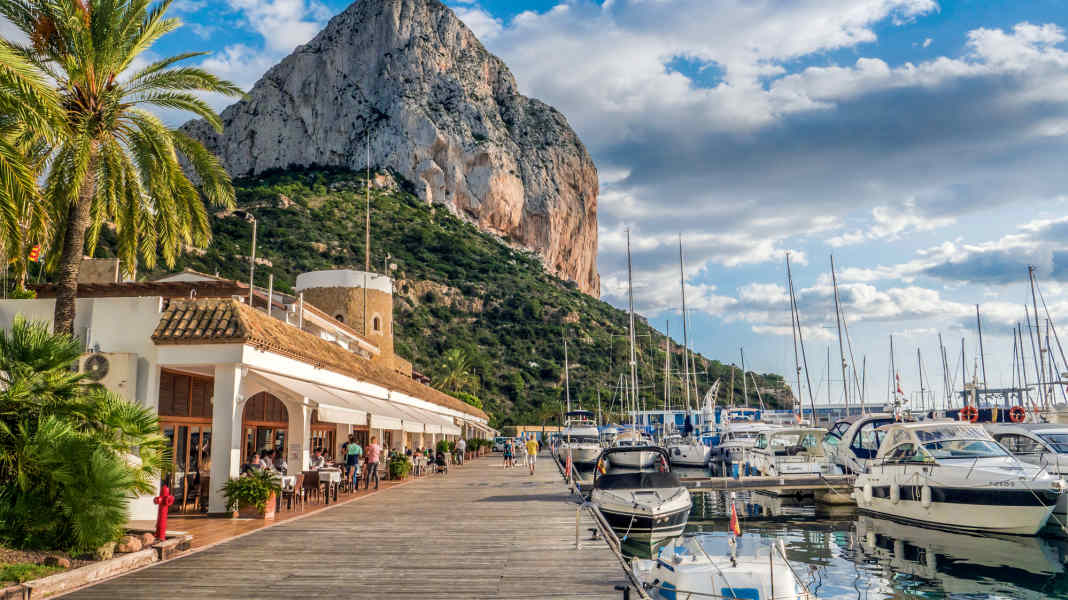
Important stretches of coastline for tourists also have euphonious names in Spain. On the way from Alicante to Valencia, we move from the centre of the Costa Blanca, which is characterised by white sandy beaches and white house facades, to the heart of the Costa del Azahar, whose name refers to the orange blossoms of the citrus fruit plantations that are omnipresent here. In addition to the start and finish towns, Altea also offers an urban atmosphere combined with important history. The other towns are a little more tranquil, at least in terms of urban flair, but hardly less touristy in the high season.
The larger towns offer plenty of variety and history to touch. There were already settlements here 5000 years ago. The region was already highly developed during the Roman Empire. You can find relics of past eras everywhere. The historic old towns with their picturesque alleyways, countless restaurants and street pubs are buzzing with life today. The culinary offerings throughout the region are often of a very high standard. Excellent quality is offered not only by Michelin-starred restaurants, but also by ordinary pubs. Low prices are one of the region's strengths, at least in comparison to the Balearic Islands. Whether it's marina fees or eating out, you can live much more cheaply here without having to compromise. This also applies to sailing along the attractive coastline with numerous anchoring options.
All the marinas we visited offer a full range of harbour services and technical support. Whether you are looking for a berth for your own yacht, a charter boat for a week's cruise or a temporary spot for a holiday with your own trailer boat, whether you want to go diving or fishing, everything is possible.
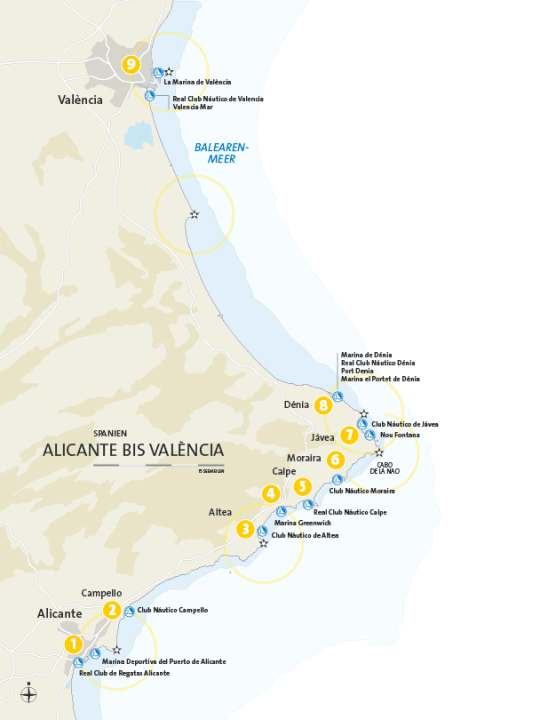
1. alicante
▹ Pos N 38°20.3', W 0°28.9'
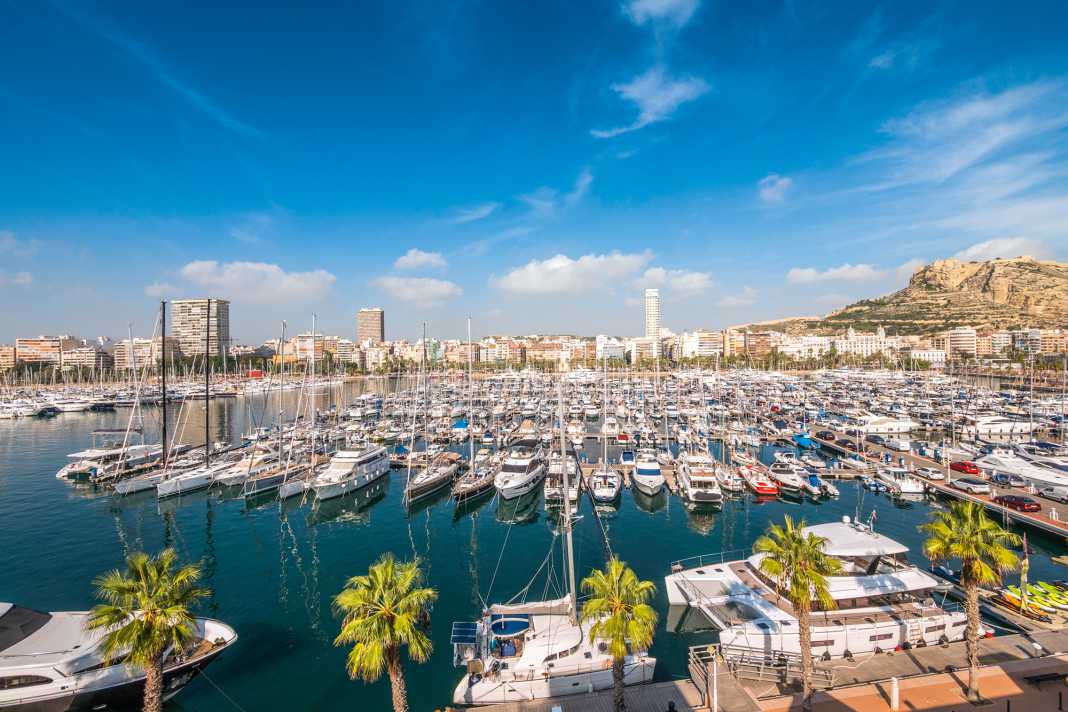




The capital of the province of the same name, with over 300,000 inhabitants, has an eventful history. Inhabited since the Neolithic period and founded 2300 years ago by Greek settlers with the name "Akra Leuke", it was renamed "Lucentum" after the Roman conquest in 201 BC and then "Al Lucant" in the Middle Ages after the conquest by the Moors. The impressive old town with its pretty facades and numerous restaurants can be reached on foot from the footbridges. The Castillo de Santa Bárbara towers over the entire setting. In addition to the commercial parts of the harbour, there is an area for "The Ocean Race" with its own museum.
Directly adjacent is the Marina Deportiva del Puerto de Alicante ( www.marinaalicante.com ), the largest marina in the city. Around 750 berths up to 60 metres long with a depth of between 2.5 and 12 metres are available at the jetties. The marina offers a full range of services from technical operations to a travel lift. Varadero provides technical services for larger yachts up to 40 metres with dry docks and lifting facilities up to 240 tonnes. The Real Club de Regatas Alicante ( www.rcra.es ) is located in the southern harbour area. A sailing club where - as almost everywhere on the Spanish Mediterranean coast - motorboats are also very welcome. Guest moorings are generally available, but you should give advance notice of your arrival, especially in the high season.
2. El Campello
▹ Pos N 38°25.8', W 0°23.1'
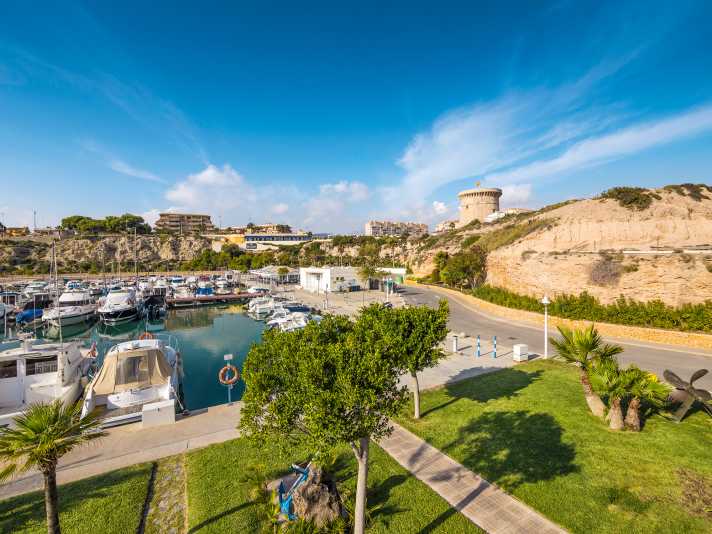
If you are looking for peace and quiet, you are in good hands in this small coastal town with its historic buildings and few architectural sins. The watchtower Torre Vigía de la Illeta near the harbour dates back to the 16th century and the ruins in front of it are 5,000 years old. The Club Náutico Campello (www.cncampello.com) offers full service and 476 berths for boats from five metres in length. There are 20 berths for yachts up to 15 metres. The winter storage has capacity for 160 boats. The catch is auctioned in the adjacent fishing harbour with market.
3. altea
▹ Pos N 38°35.3', W 0°3.3'
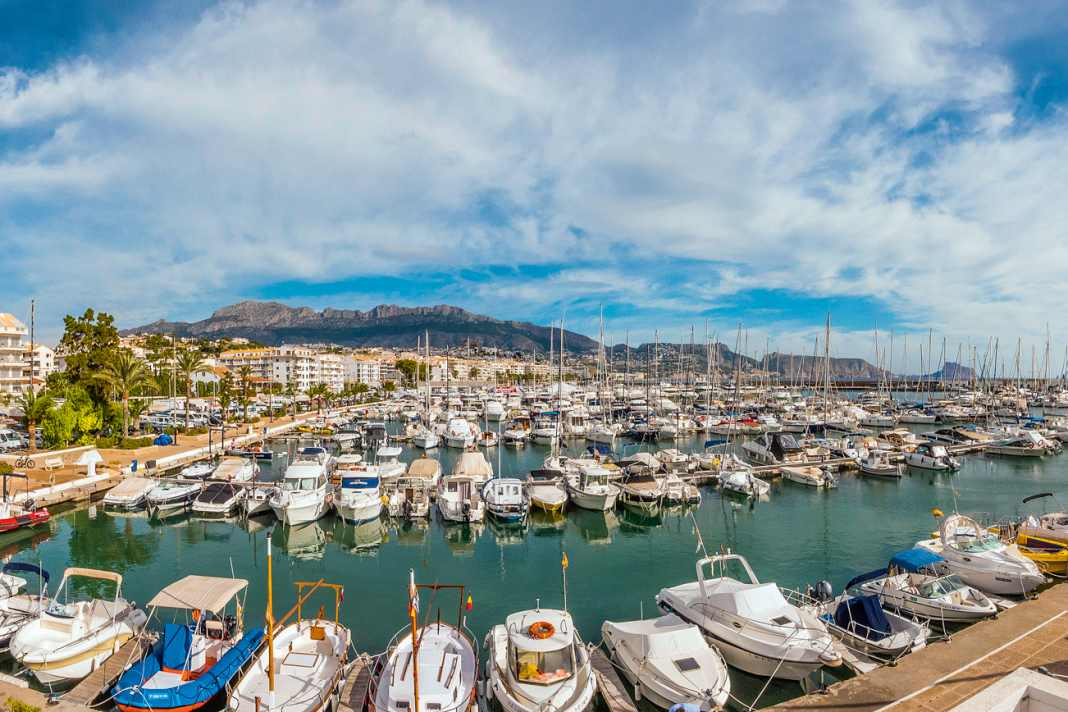


Founded by Iberians and Romans, Altea also has a very long history. Today, the town lives from tourism. Of course, there is also a remarkable old town with the typical white façades, where you will find a wide range of restaurants. The old town centre, with the church of Nuestra Señora del Consuelo, is less than two kilometres from the marina and can therefore be easily reached on foot. At the Club Náutico de Altea ( www.cnaltea.com ) there are 185 berths for yachts up to 30 metres in length and three metres draught. There is also a 900 square metre dry dock. Catering is available directly in the harbour. The club welcomes guests. Regattas are regularly organised here.
4th Marina Greenwich
▹ Pos N 38°37.8', W 0°0.2'
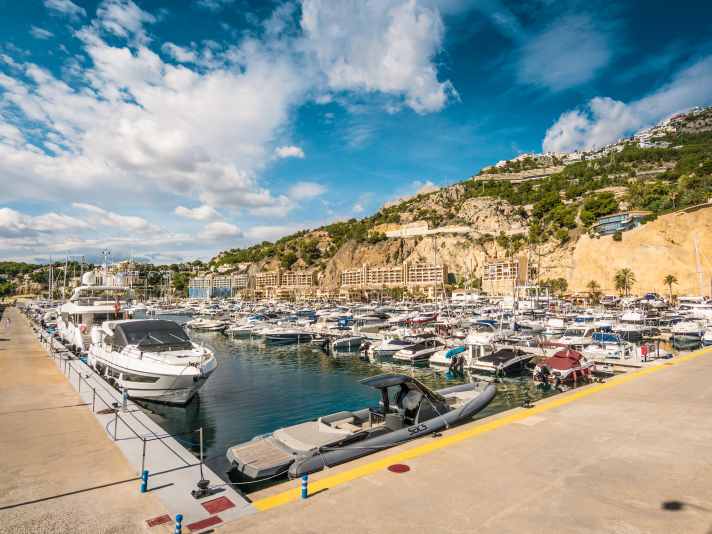
The Greenwich Marina ( www.marinagreenwich.com ) is located four nautical miles north-east of the centre of Altea and is part of the town. The development here is characterised by holiday and apartment buildings that are relatively well integrated into the landscape without an urban structure. There are 542 berths for yachts up to 30 metres long and six metres deep on the jetties of the modern private marina. A travel lift can move up to 50 tonnes. A comprehensive technical service is also available on site, as are two charter companies and a diving centre.
5th Calpe
▹ Pos N 38°38.2', E 0°04.0'
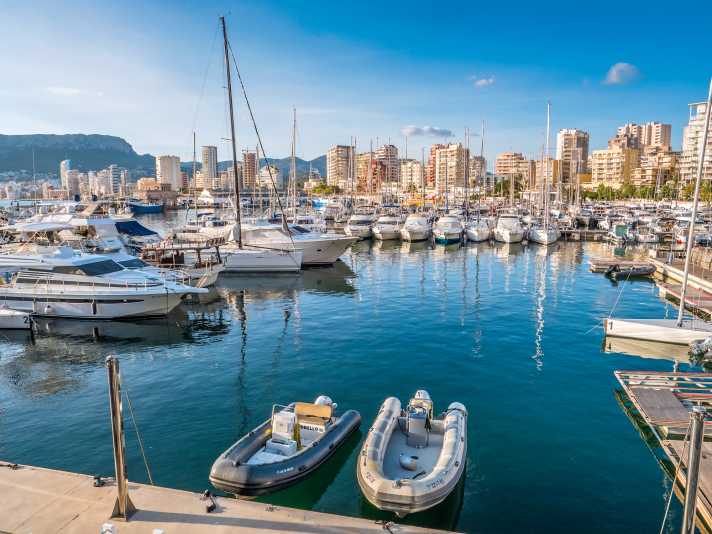
The town is very touristy. Tower blocks on the beach accommodate the guests. The population of 20,000 increases tenfold in summer. The beautiful marina with the Real Club Náutico Calpe ( www.rcnc.es ) is fortunately located away from it at the eastern end, directly in front of the striking Penyal d'Ifac rock. However, if you want to reach the beautiful old town, you have to walk three kilometres. There are 264 moorings for boats up to 24 metres long and four metres deep. The fishing fleet and a fish market with auctions enrich the harbour.
6th Moraira
▹ Pos N 38°41.1', E 0°08.4'
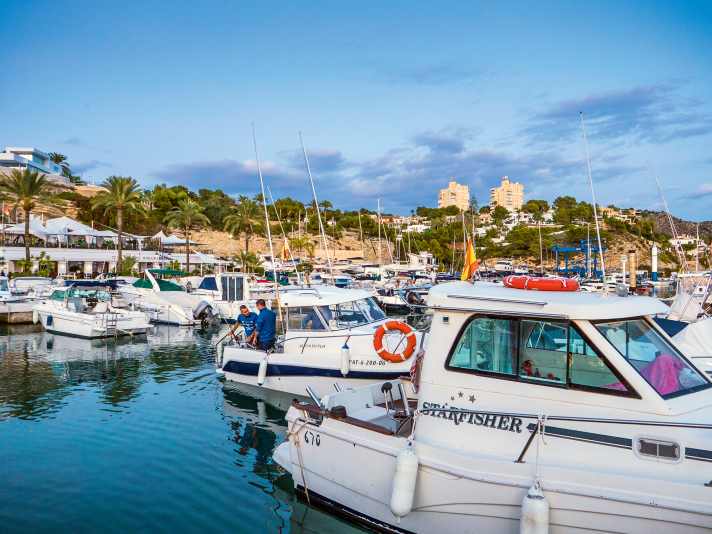
The former fishing village of Moraira also has a small old town and is becoming increasingly popular with tourists, who mostly reside in villas here. There are only a few hotels or high-rise buildings. Right next to the harbour is a cosy pub district with numerous restaurants and extensive supply options. However, these can also be found directly in the Club Náutico Moraira ( www.cnmoraira.com ). It has 620 berths for boats up to 15 metres in length. It also offers full service, winter storage and a crane that can handle 10 tonnes.
7th Jávea
▹ Pos N 38°47.7', E 0°11.1'
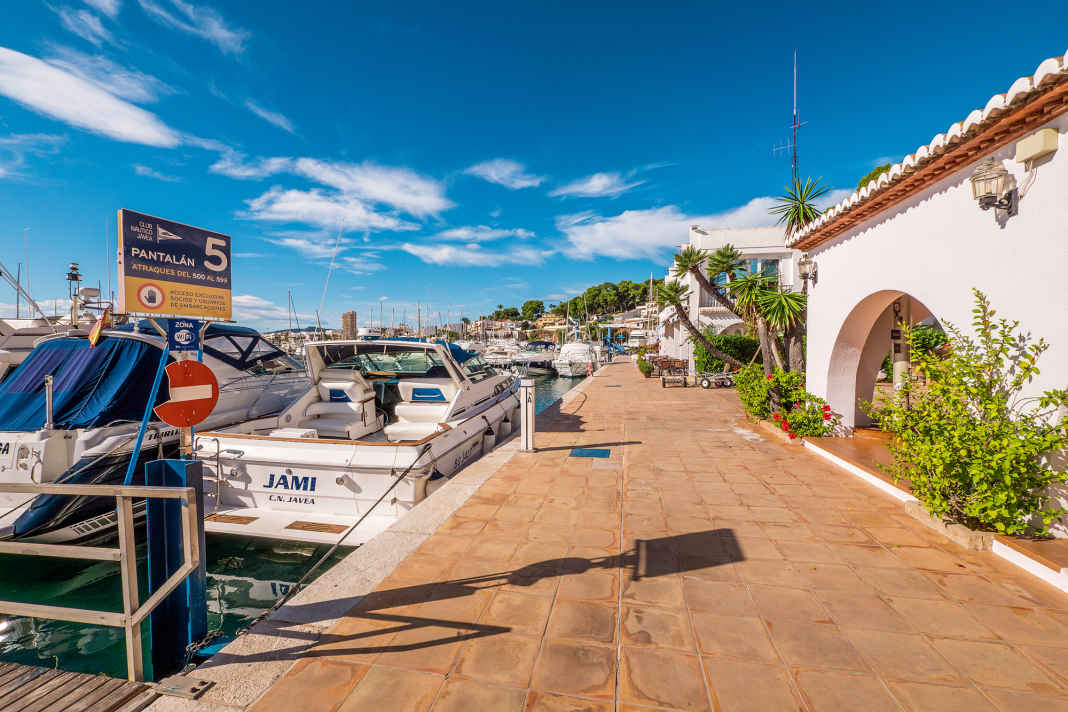


The historic town centre of the settlement, which was founded in the Middle Ages, is located two kilometres inland from the coast. The modern part along the sandy beach is strongly characterised by tourism. The Marina Nou Fontana ( www.marinanoufontana.es ) specialises in smaller pleasure craft up to nine metres in length. They are well protected in the Canal de la Fontana, which adjoins the beach. The older part has 151 berths, charter facilities and a diving centre. The newly extended part increases the capacity by 318 berths. The Club Náutico de Jávea ( www.cnjavea.net ) has 250 berths for boats and yachts up to 20 metres in length. Travellift and crane complete the range of services. Guests are always welcome. The association is involved in organising regattas and other water sports events.
8th Dénia
▹ Pos N 38°50.8', E 0°07.5'




As a former Roman naval base and Moorish royal seat, the town with its four marinas has not lost its maritime significance. The Marina de Dénia ( www.marinadedenia.com ) has 404 berths for boats and yachts from 12 to 60 metres in length. The travel lift can handle 1000 tonnes, there is also a ramp and full service. The Real Club Náutico Dénia ( www.cndenia.es ) can accommodate 600 yachts up to 20 metres and has a crane in addition to the travel lift and a ramp. At Port Dénia ( www.portdenia.com ), superyachts up to 65 metres can find a berth. A jetty for yachts up to 138 metres is also available. The corresponding service is part of the offer. Probably the quietest part of the harbour is in the Marina el Portet de Dénia ( www.marinaelportetdedenia.es ) with 360 seats up to 20 metres in length. The service leaves nothing to be desired.
9th Valencia
▹ Pos N 39°25.8', W 0°17.8'
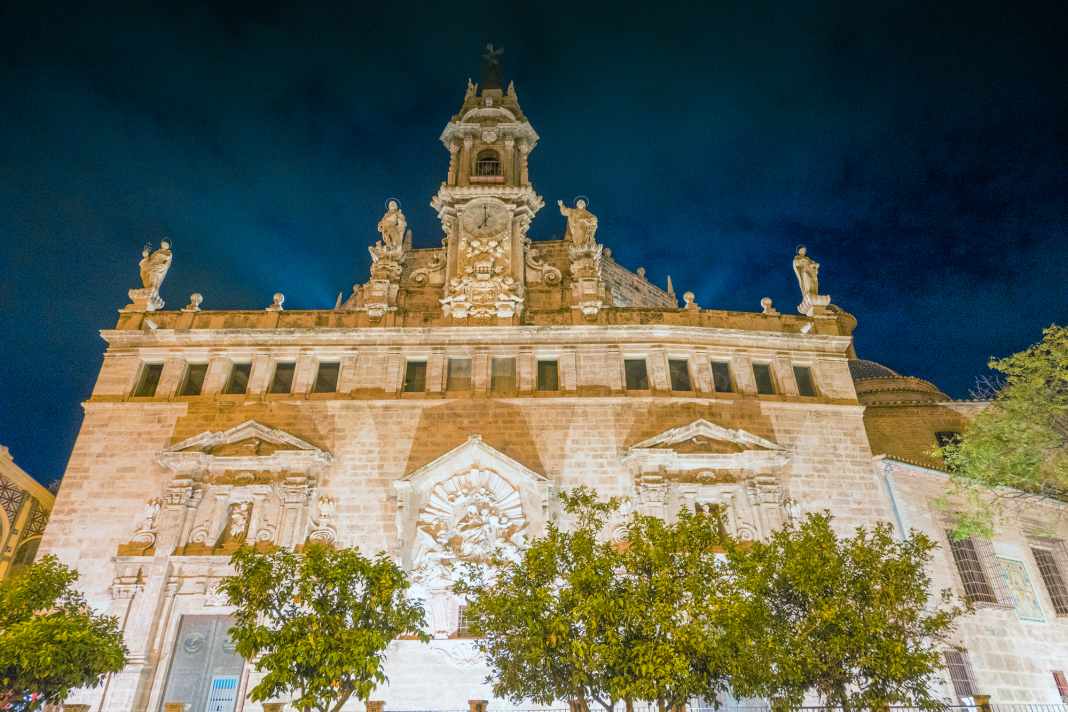



The capital of the autonomous province of the same name is the third largest city in Spain with 800,000 inhabitants. Founded around 2100 years ago by the Roman consul, the remains of the former settlement on an island in the River Turia can still be seen today in the centre of the old town near the cathedral. The nightlife is centred around the historic walls. Although the harbour with its marinas is six kilometres away, it is well connected by public transport. La Marina de València is located in the northern harbour basin ( www.lamarinadevalencia.com ). There are 800 berths for yachts in several areas. Further expansion is being planned as there is sufficient water space available. The range of services is complete.
Valencia Mar ( www.valenciamar.com ) is located further away in the front part of the southern harbour basin at the new mouth of the Turia River. There are 240 berths for yachts between eight and 120 metres. At the rear of the same basin is the Real Club Náutico de Valencia ( www.rcnv.es ). With 1206 seats, it is the largest club in the country.
Service
Nautical information
Journey
Direct flights to Alicante are currently available from Berlin, Dusseldorf, Cologne, Munich, Stuttgart and Hamburg, for example. Valencia is served by direct flights from Berlin, Cologne, Düsseldorf, Frankfurt, Munich or Stuttgart. Arrival by trailer boat is also possible, as all marinas offer moorings and have travel lifts, cranes or ramps. Travelling on your own keel is particularly attractive for owners with moorings on the Balearic Islands, as Ibiza is only around 50 nm from the coast.
Charter
Charter boats are available in all marinas. They range from sports boats for day trips to larger yachts. The offer can be enquired about in every marina. Selection: Calpe Diem ( www.calpe-diem.com ), Euronautica Calpe ( www.euronautica.com ), Albir Marina ( albirmarina.com ), Área Náutica ( www.areanautica.com ), Náutica Pérez ( www.nauticaperez.com ), Marina Sport S.A. ( www.nauticamarinasport.com ).
Precinct
There is a dense network of marinas in the coastal region between Alicante and Valencia, making the area ideal for coastal cruises. It is necessary to book moorings in advance. There are usually small bays between the harbours that are suitable for anchoring during the day. In between, white sandy beaches await bathers. Parts of the coast are designated as nature reserves. In general, care must be taken to ensure that the ground anchor does not fall into the strictly protected seagrass beds when anchoring. The number of mooring buoys is therefore being greatly increased, particularly in the nature reserves.
Weather/climate
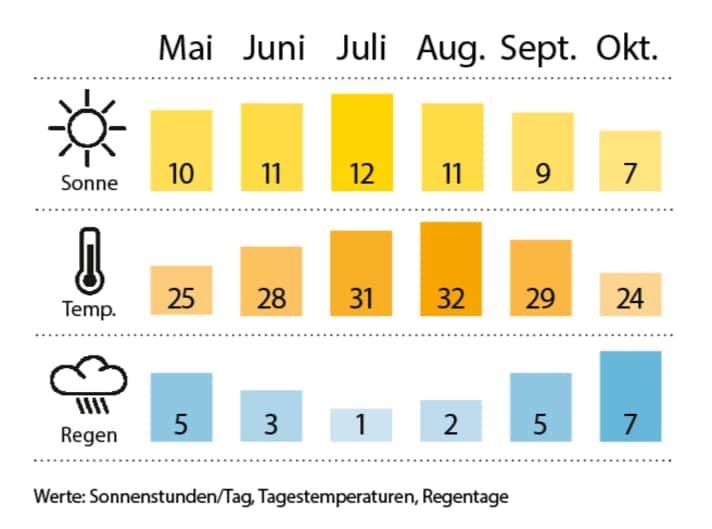
Water sports enthusiasts can expect a long season from April to November with daytime temperatures between 20 and 30 degrees. An onshore wind often starts to build up in the morning and dies down again in the late afternoon. As a result, there are usually no high waves off the coast, which also benefits motorboat captains.
The TOP 3 in the district
- Alicante: There is never a dull moment here, as there is plenty of variety in the city. You can walk from the harbour to the centre.
- Calpe: A harbour with a beautiful backdrop, a fishing fleet and sandy beaches on the one hand, but unfortunately also huge bed castles on the other.
- Dénia: A mega harbour with 2000 berths in four marinas that offers something for many tastes, just no peace and solitude.
Literature
Mediterranean Spain, Strait of Gibraltar to the French Border by Steve Pickard (English), ISBN 978-1846236501, 61,60 €;
NV.Atlas Spain ES1 Cabo Creus to Cabo San Antonio, size: 30 x 42 cm, 49 €, and ES3 Cabo San Antonio to Gibraltar, size: 30 x 42 cm, 49 €. nvcharts.com

